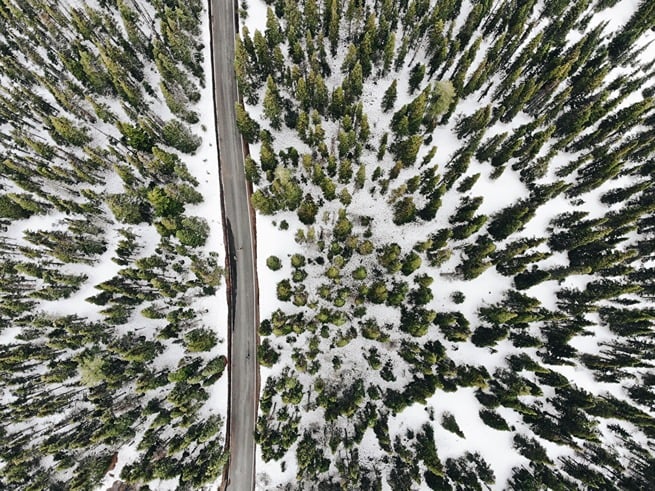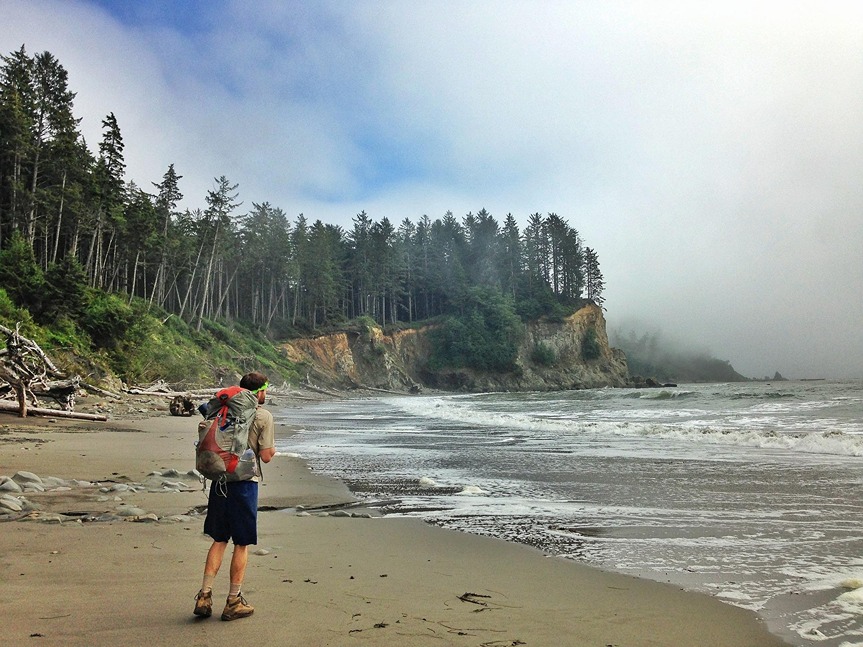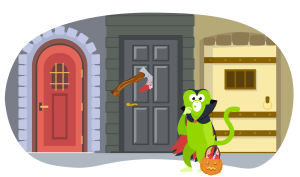Table of Contents
This post may contain affiliate links. If you click a link and complete a purchase, we may earn a small commission at no extra cost to you.
Located just across the Puget Sound from Seattle lies the stunning natural wonderland that is Olympic National Park. Covering most of the peninsula hugging the Pacific Coast of Washington, the Olympic National Park is the 5th most-visited park in the entire nation and one of the absolute best destinations in Washington.
From snow-capped peaks to the moody coastal beaches, from the Hoh Rainforest to the stunning shores of Lake Crescent, Olympic National Park is what outdoor adventurer dreams are made of.
There is something to be said for the freedom that a car gives you to explore this beautiful part of the Pacific Northwest Wonderland, but there are many different ways to get there – and save you quite a bit of cash on gas money while you’re at it. Keep reading to find out the various ways to explore Olympic National Park.
Olympic National Park by Bus

The Olympic National Park is an excellent Seattle day trip, as it’s located on the Olympic Peninsula near the city. However, the two are separated by the Puget Sound, so you’ll have to either ferry, bus, or loop around via a car to enter the park.
One of the most convenient ways to get to the park is to take a bus to Seattle and then transfer to another bus from Seattle to the Olympic Peninsula.
Though the National Park is enormous (we’re talking over 1,400 square miles) and has many entrances, most transportation goes through Port Angeles, WA. Port Angeles is located at the northern edge of the Olympic Peninsula, near the Olympic National Park Visitor Center, Hurricane Ridge, and Lake Crescent.
With Wanderu, you can book both legs of your trip – the bus to Seattle, and the bus from Seattle to Port Angeles – in just one search.
Amtrak Thruway buses travel from Seattle to Port Angeles in about 4 hours on average.
If you are unable to catch this convenient route, there are also a few public transit options that connect Seattle to Port Angeles.
Dungeness Lines, a Greyhound bus service option connected to the local transit authority WSDOT, offers service from the Seattle Airport to Port Angeles. Clallam Transit is a local public transit option that also offers a direct route from Seattle to Port Angeles.
All of these options arrive at the main bus station in Port Angeles:
Port Angeles, WA
Gateway Transit Center, Port Angeles
1.4 miles from Olympic National Park Visitor Center
Gateway Transit Center
From the Gateway Transit Center, you can check out local shuttle services to get you to the top of the beautiful Hurricane Ridge.
Olympic National Park by Train + Bus

There is no direct train service to Port Angeles, WA – but don’t let that deter you! Since trains arrive regularly in Seattle, you can take a train to Seattle and then transfer to a bus from Seattle to Port Angeles.
You can even book this two-part journey with just one easy search on Wanderu. Your train and bus tickets will be on the same Amtrak itinerary, cutting your planning process in half.
Here some of the cities with train and bus trips to Port Angeles that require just one transfer:
| Tukwila, WA to Port Angeles, WA | $48.50 | |
| Tacoma, WA to Port Angeles, WA | $53.00 | |
| Everett, WA to Port Angeles, WA | $56.50 | |
| Kelso, WA to Port Angeles, WA | $65.50 | |
| Vancouver, WA to Port Angeles, WA | $75.00 | |
| Portland, OR to Port Angeles, WA | $75.00 | |
| Oregon City, OR to Port Angeles, WA | $79.00 | |
| Salem, OR to Port Angeles, WA | $81.00 | |
| Eugene, OR to Port Angeles, WA | $83.00 | |
| Spokane, WA to Port Angeles, WA | $97.00 | |
| Albany, OR to Port Angeles, WA | $134.00 |
Bus & train prices are based on the average cost of a one-way ticket for the respective route available on Wanderu over a 30-day period.
For each of these cities, you will take an Amtrak train to Seattle, and then transfer to an Amtrak Thruway bus to Port Angeles. The transfer happens within the same station (King Street Station in Seattle), so it’s only a matter of steps between your train and bus.
Olympic National Park by Plane

Hoping to head to Olympic National Park via air travel? The closest airport is Sea-Tac, located about halfway between the metropolitan areas of Seattle and Tacoma. Sea-Tac is a large airport and operates many domestic and international flights every day.
From the airport, it is roughly 145 miles to get to the heart of Olympic National Park. If you plan to rent a car once you land in Seattle, make sure to make a reservation in advance. You can find the best deals by searching for rental cars on Wanderu.
Olympic National Park by Car
Traveling to the Olympic National Park via car gives you the most freedom, and it’s usually the quickest option to get there.
There are two main ways to drive to the Olympic Peninsula from the Seattle area: you can opt to stay on land by driving around the Puget Sound, or opt to take one of the ferries from Seattle to the Peninsula. Either route takes roughly 3 hours to achieve, so you can make the decision based on cost and personal preference.
Traveling by Car with a Loop Route:
If you want to avoid ferry lines and the cost that goes with them, consider driving to Olympic National Park via the land route.
The route from Seattle will loop you through Tacoma, and end in Port Angeles to the north. While this route should take you between 2.5-3 hours most times, note that there is often heavy traffic in Tacoma during rush hour and on the weekends.
From Seattle, head south on 1-5. When you enter Tacoma, take WA-16 West to head towards the Peninsula, starting to maneuver towards Port Orchard/Gorst. From there, take WA-3 North towards Port Gamble, then connect to the WA-104 and cross the Hood Canal Bridge. WA-104 leads you to WA-101 North where you will continue on until you reach Port Angeles.
Traveling by Car with a Ferry:
If you have never been on a ferry, or if you’re a sucker for incredible views, this is an excellent option to get to Olympic National Park. Ferries and bridges across the Puget Sound make this a more straight shot from Seattle to Port Angeles.
The Bainbridge Island Ferry allows passengers to walk, bike, or drive onto the ferry. Leave your car in the parking level, and head to the upper decks for amazing views of the Seattle skyline, Olympic Mountains, and the San Juan Islands for the duration of the 30-minute ride.
While the ferry ride is definitely idyllic, be prepared to pay roughly $20 per car and around $10 per adult in the car for the cost of the ferry. Consider making a reservation to ensure you are not stuck in long lines.
Start at the Ferry Terminal off of Alaskan Way in Seattle. Board the Bainbridge Island Ferry and enjoy the brisk cruise across the Sound. Exit onto Bainbridge Island and follow the road (WA-305 North) to head across the Agate Passage Bridge. At Poulsbo, take the WA-3 connection north to WA-104 and cross the Hood Canal Bridge. Continue on this route to connect to WA-101, which will direct you to Port Angeles.
Olympic National Park by Tour

If DIY is not your style, let someone else take care of the logistics by booking a small-group tour of Olympic National Park. This 12-hour tour from Evergreen Escapes transports you and your group from Seattle to the park, hitting all the highlights over the course of the day.
The tour includes pick-up and drop-off at any hotel in downtown Seattle, ferry tickets, transport through the park via a private van, lunch, park entry fees, and of course, a full-day tour from a qualified guide. If all of the buses, trains, and ferries intimidate you, this is a stress-free way to experience Olympic National Park. Plus, you can cancel the reservation for free.
How to Get Around Within Olympic National Park

Once you get to the park, there are a few considerations to keep in mind. There is a fee to enter Olympic National Park, and a one-day pass will cost around $30. An annual pass for Olympic National Park is $55, or you can use your America the Beautiful Pass if you have one. Parking is included in the entry fee.
The weather in the Pacific Northwest is moody and temperamental. If you are visiting any time outside of July or August, be prepared for potential wet driving conditions, or snow at higher elevations. This may mean some parts of the park are closed due to winter conditions at some parts of the year.
If you don’t have a car or didn’t rent one, keep in mind that Olympic National Park is BIG. Walking or biking around nearly a million acres might be just a little ambitious. Luckily, public transit like Clallum Transit and Jefferson Transit serve several main hubs in the park, including Port Angeles, La Push, Forks, and Lake Crescent.
Things To Do in and Around Olympic National Park

You made it! Now that you’re on the Olympic Peninsula, here are some of the top spots to check out:
- Hit the Hoh: Plan a trip to the Hoh Rain Forest, whose annual rainfall ranging from 140 to 170 inches makes it a mossy natural wonderland. Discover giant trees covered in a blanket of green in this fairytale landscape.
- Hurricane Ridge: Just a short hop 17 miles south of Port Angeles, check out the summit of Hurricane Ridge. This is the easiest mountain to access in the park (you can just drive straight to the top), offering awesome views for minimal effort. Be sure to drop by the visitor center to learn more about this awesome area.
- Kalaloch and Ruby Beach: Head over to where the land meets the Pacific on the misty Washington coast. You might want a rain jacket more than a swimsuit though, as this area is better for tide pooling and climbing beach rocks than swimming. Stop by Forks to see if you can spot a sparkly vampire.
- Lake Crescent: Located between Port Angeles and Forks lies the amazing crystal-clear Lake Crescent. This part of the park offers a cozy lounge where you can dine overlooking the valley and water, and spend a relaxing day in the sun.
- Sol Duc Valley: No trip to Olympic National Park is complete without a hike – or ten. One of the easiest and most accessible will lead you to Sol Duc Falls Overlook. These stunning falls are only a short forest walk away from the road.
No matter what path you take to Olympic National Park, it will always lead you to a new and exciting outdoor adventure.
Take the stress out of travel planning with Wanderu or the Wanderu app. We’ll help you find the best travel deals so you can focus on enjoying the beaches, forests, waterfalls, mountains, and lakes in this magnificent park.







